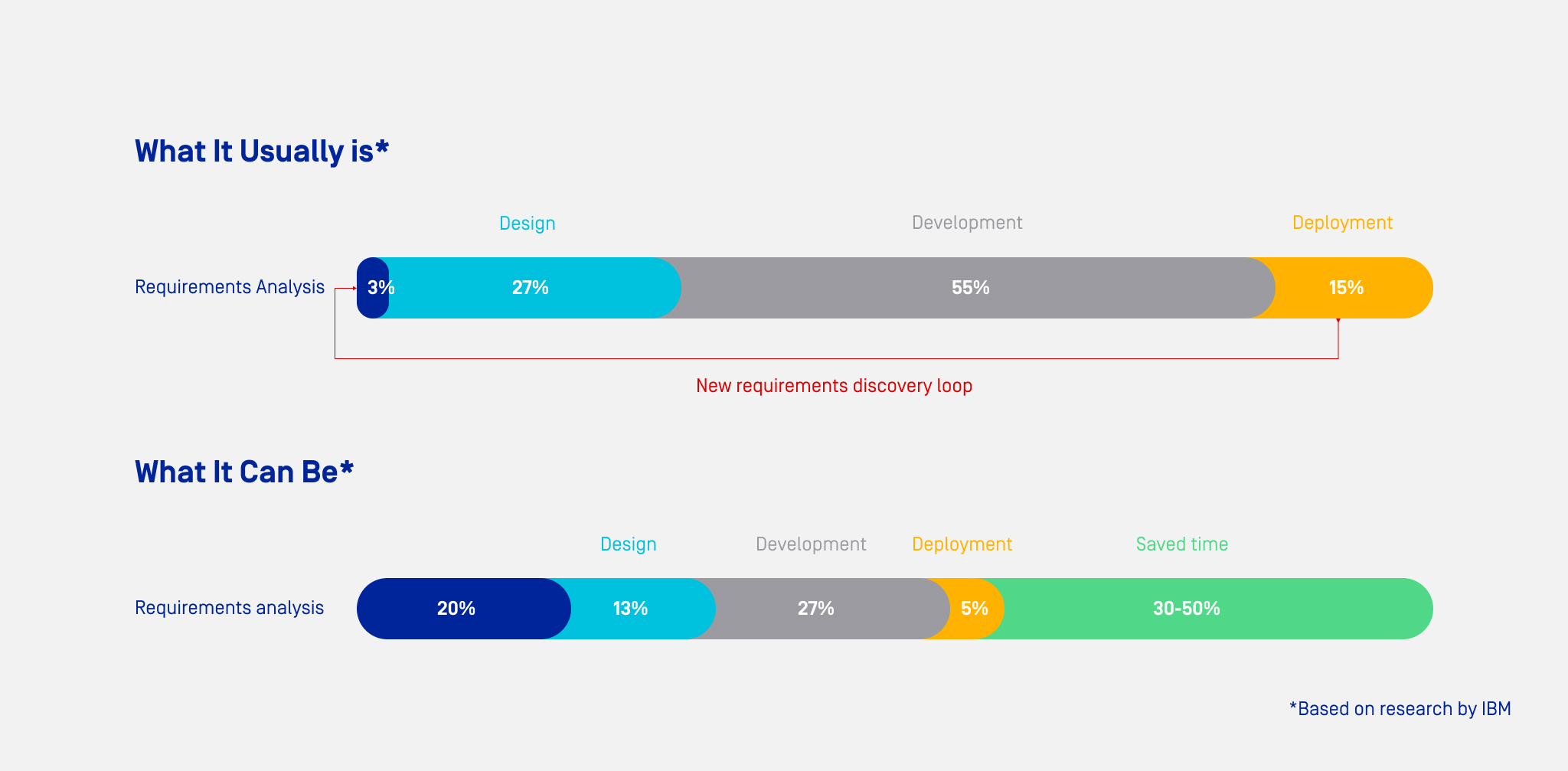The Cost of Neglecting Comprehensive Analysis in Project Activities
26-01-2024 | Michał ZielińskiMotivation is a vital success factor for any digitalization project. Today, we are going to take a step further and delve into the topic of investment planning.
Depending on the process being digitalized and the scale of investment, the planning of investments may vary.
The first group of projects comprises the so-called Low Hanging Fruits or Quick Wins. These initiatives usually follow a predictable or standardized course, focusing on a narrow set of functions or a specific implementation area. They often require minimal customization. In view of the above, planning them does not pose a significant challenge, as the steps involved can be executed in an agile manner and closed within a few two-week sprints.
The second group encompasses complex, extensive projects where the analysis stage might (and, to my mind, should!) occupy a substantial portion of the time allocated for their execution. This approach allows for better action planning, the creation of valuable Use Cases, and, most importantly, reduces the emergence of the so-called New Requirements Discovery Loop. This loop can otherwise divert the project back to the design phase, considerably extending the delivery time. IBM’s research has demonstrated that dedicating additional time to analysis can reduce the overall duration of the project by 30% to even 50%, potentially delivering value twice as fast in extreme cases.
The third group consists of projects that are most often (though not always) very large and, above all, critical. These projects impact business continuity, interfere significantly with processes, or are related to critical infrastructure or security. For this group, analysis is frequently conducted as an individual project, completed with delivering a specification, concept, or a technical project. This approach facilitates more effective management of factors influencing the level of risk associated with implementation.
Let’s clarify that performing an analysis, which examines and identifies needs, including hidden ones, does not necessarily imply an expansion of the project scope. On the contrary, a well-executed analysis often helps reduce the scope through appropriate prioritization of requirements and a Pain-Gain analysis.
There is also a scenario which I would classify as Group Zero. In this case, we are not solely planning a specific investment but rather determining the steps towards Digital Transformation. Roadmaps provide invaluable help in this area, outlining the paths we need to take to achieve the predetermined business goals.
If you’d like to learn more about Digital Transformation Roadmaps, explore our ImFactory Knowledge Zone, where you will find a wealth of informative articles. Also, feel welcome to reach out to us via the Consultation Form or on LinkedIn.

Authors
Check if Digital Transformation is the Answer to Your Company's Needs
What topics can you discuss with us?
- How to build a Digital Transformation strategy for your enterprise using the Roadmap and ADMA methodology.
- How to obtain real and reliable data on manufacturing processes.
- How to monitor and increase production efficiency.
- How to reduce or eliminate the circulation of paper documents in production.
- How to ensure compliance with industry standards, requirements, and legal regulations.
- How to provide a flexible and scalable IT environment for a growing business.
- How to integrate production with the ERP system.
- How to lower the costs of owning multiple diverse IT solutions in production.
- How to support the process of change and adaptation of new technologies within the organization.
- How to effectively plan and schedule production.
- How to conduct migration of old, unsupported, and unsafe legacy systems.
The Free Consultation Process:
Thank you for submitting the form.
Our account manager will contact you within 1 business day to discuss your challenges and schedule a meeting with the consultant best suited to your needs.
While you wait, feel free to explore our ImFactory Knowledge Zone. There, you will discover a wealth of interesting webinars, articles, and case studies providing insights into the realm of Digital Transformation.
CloseThe Free Consultation Process:












